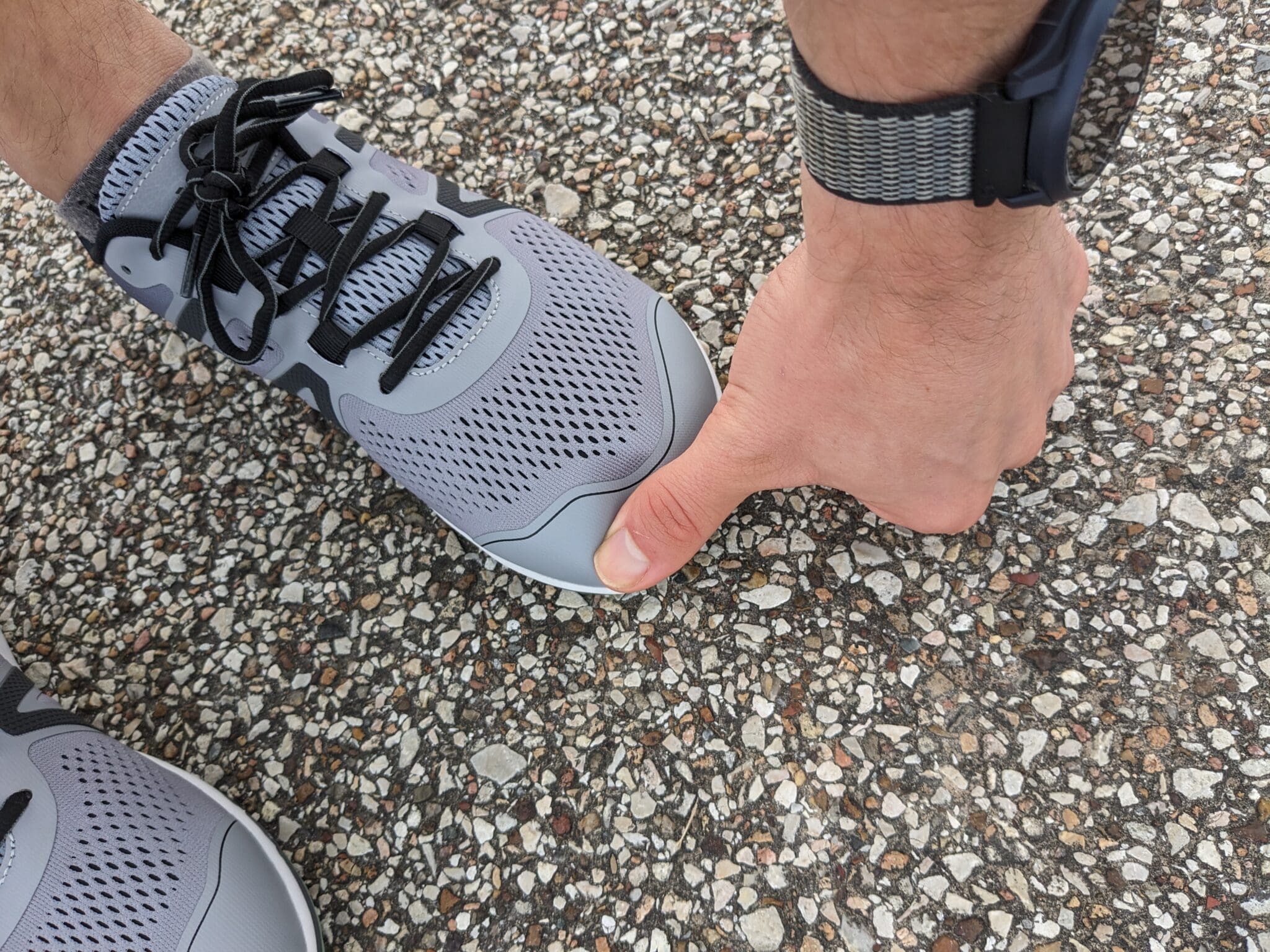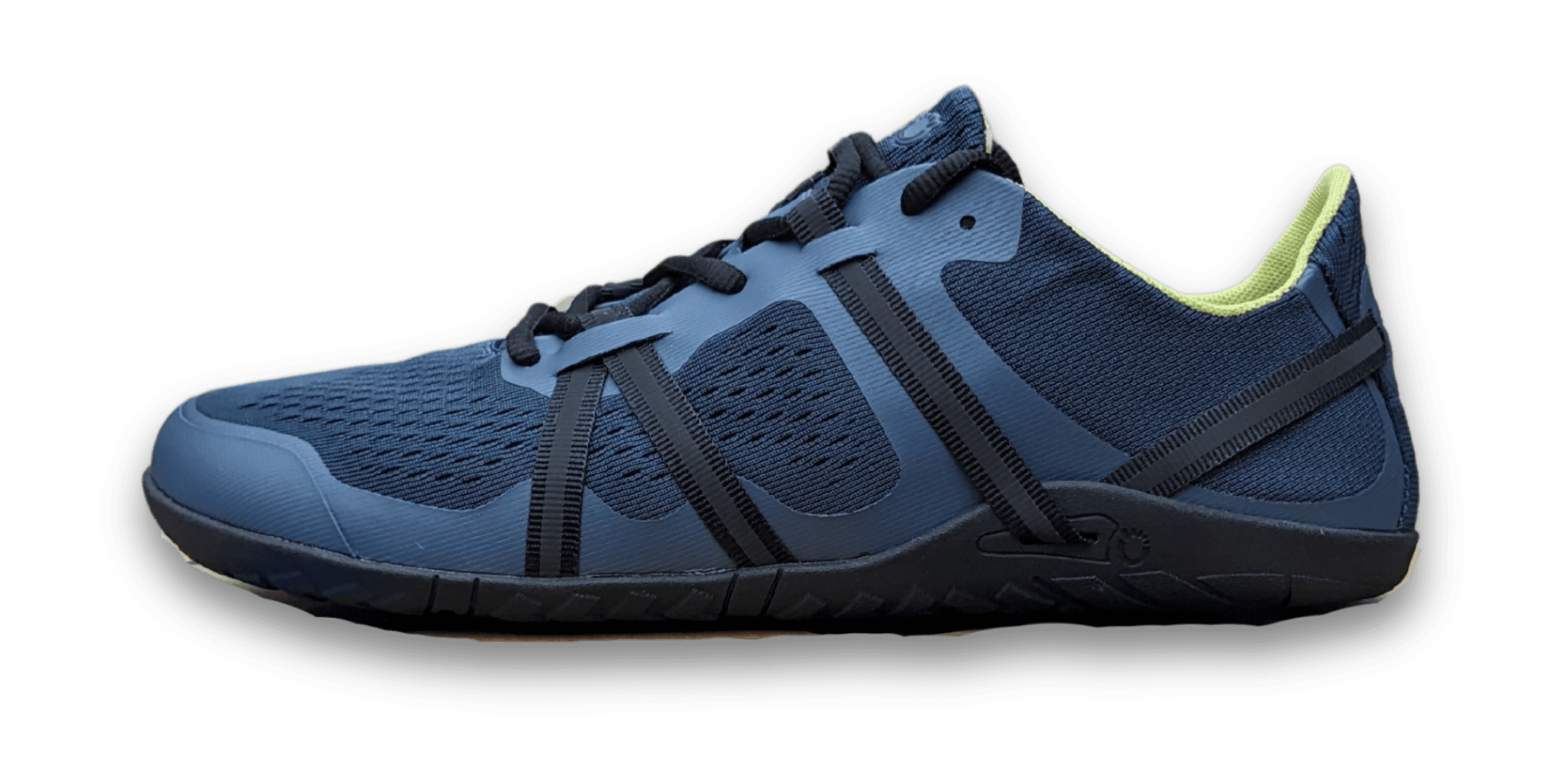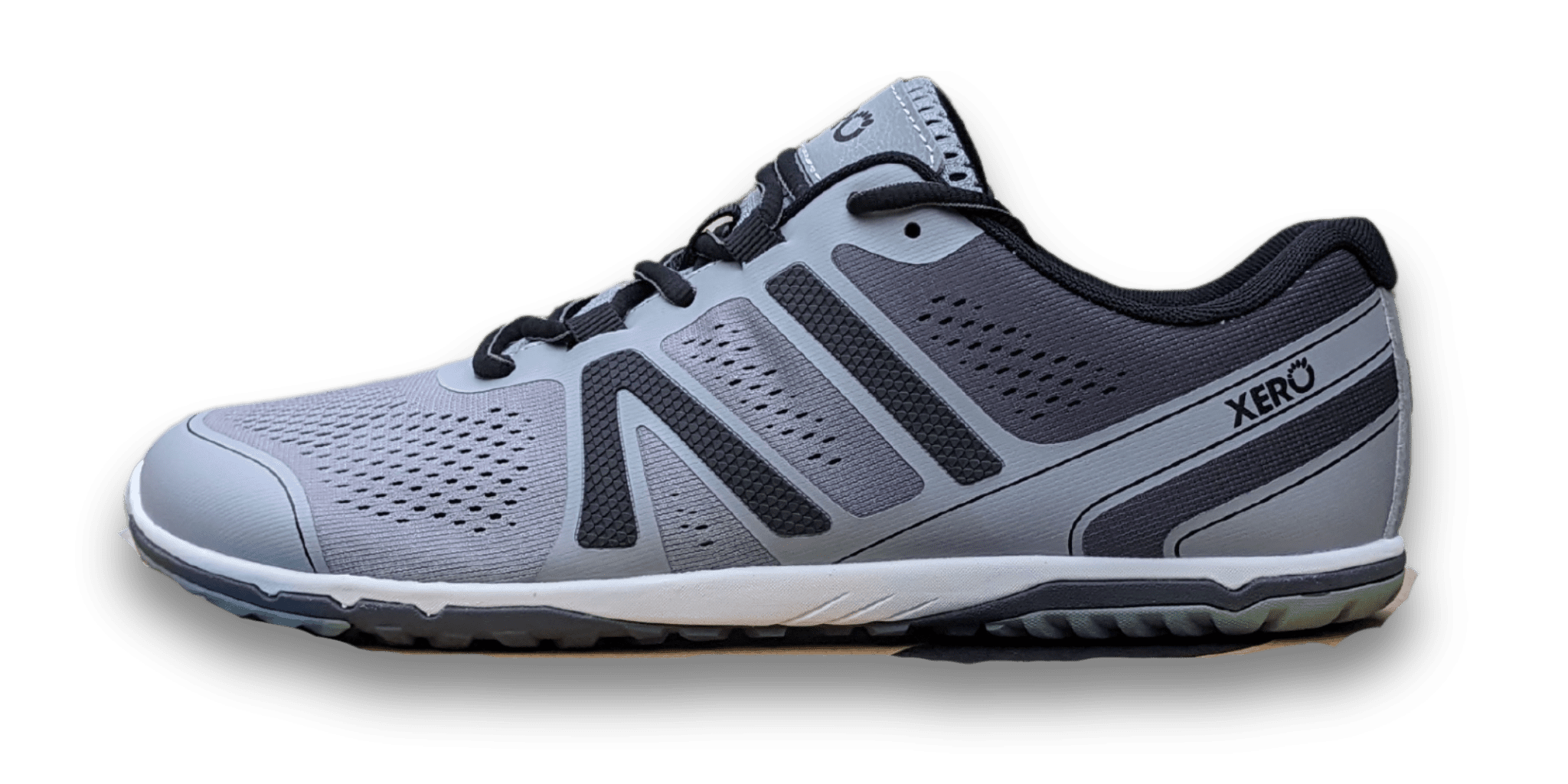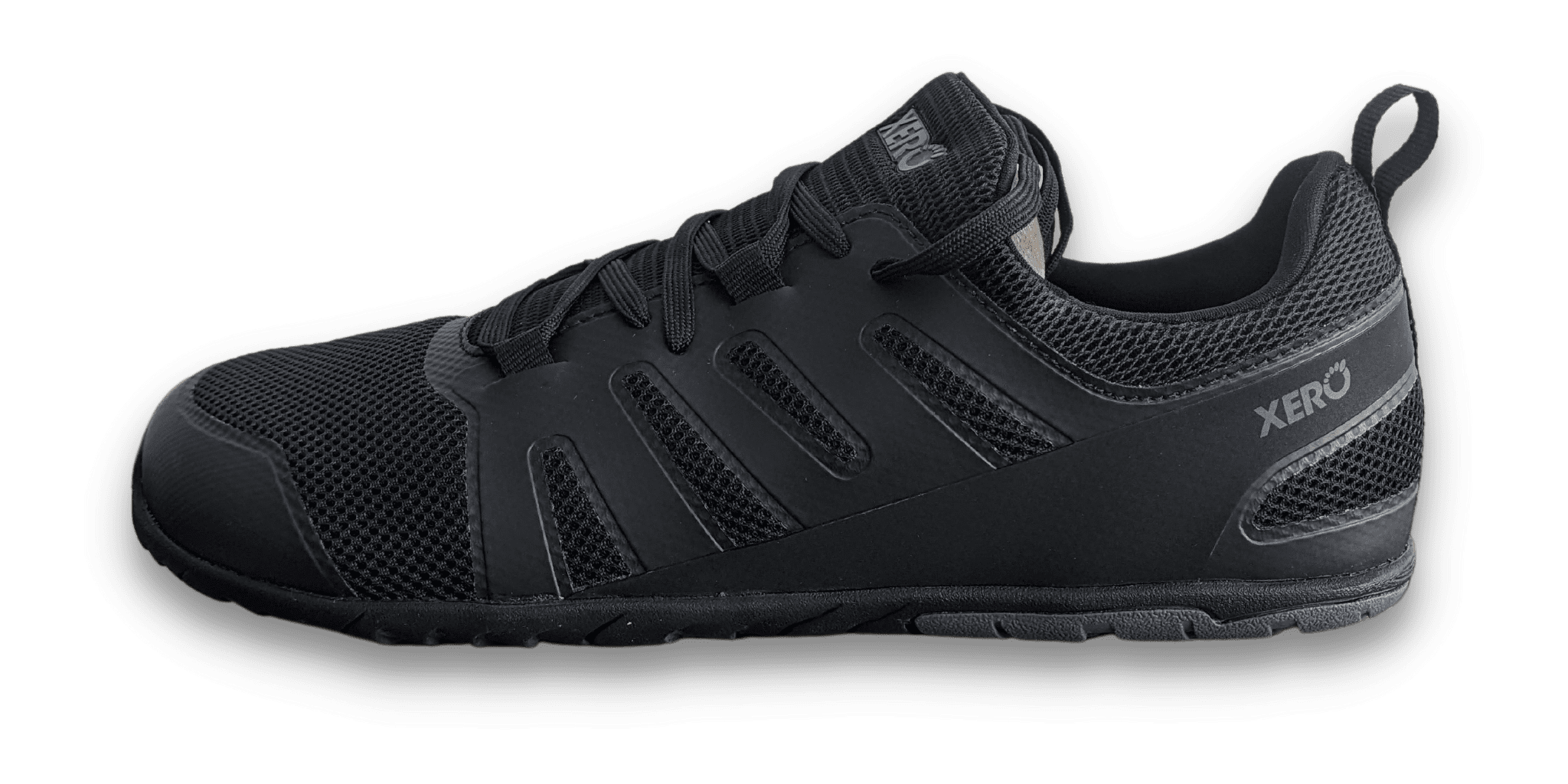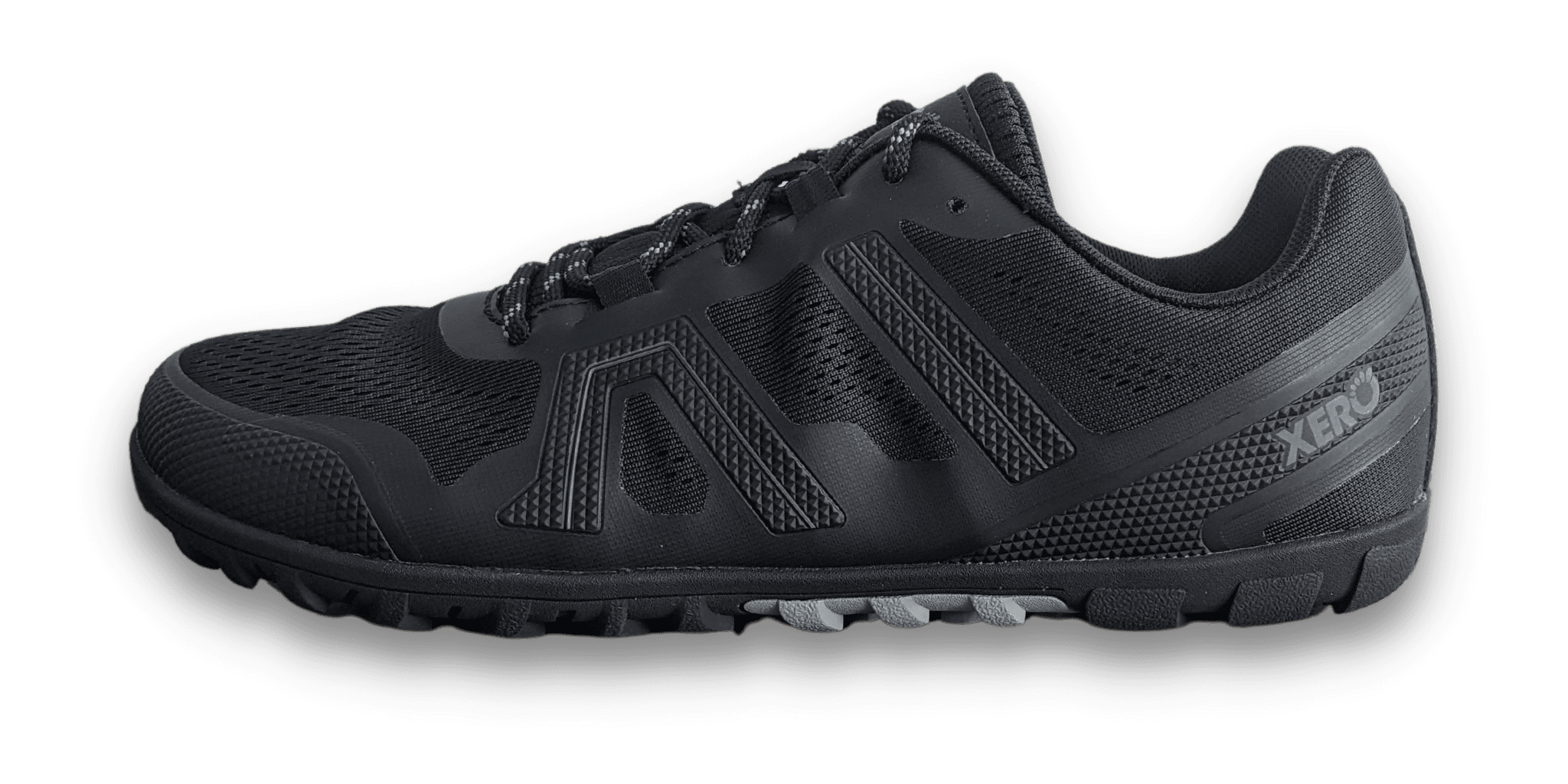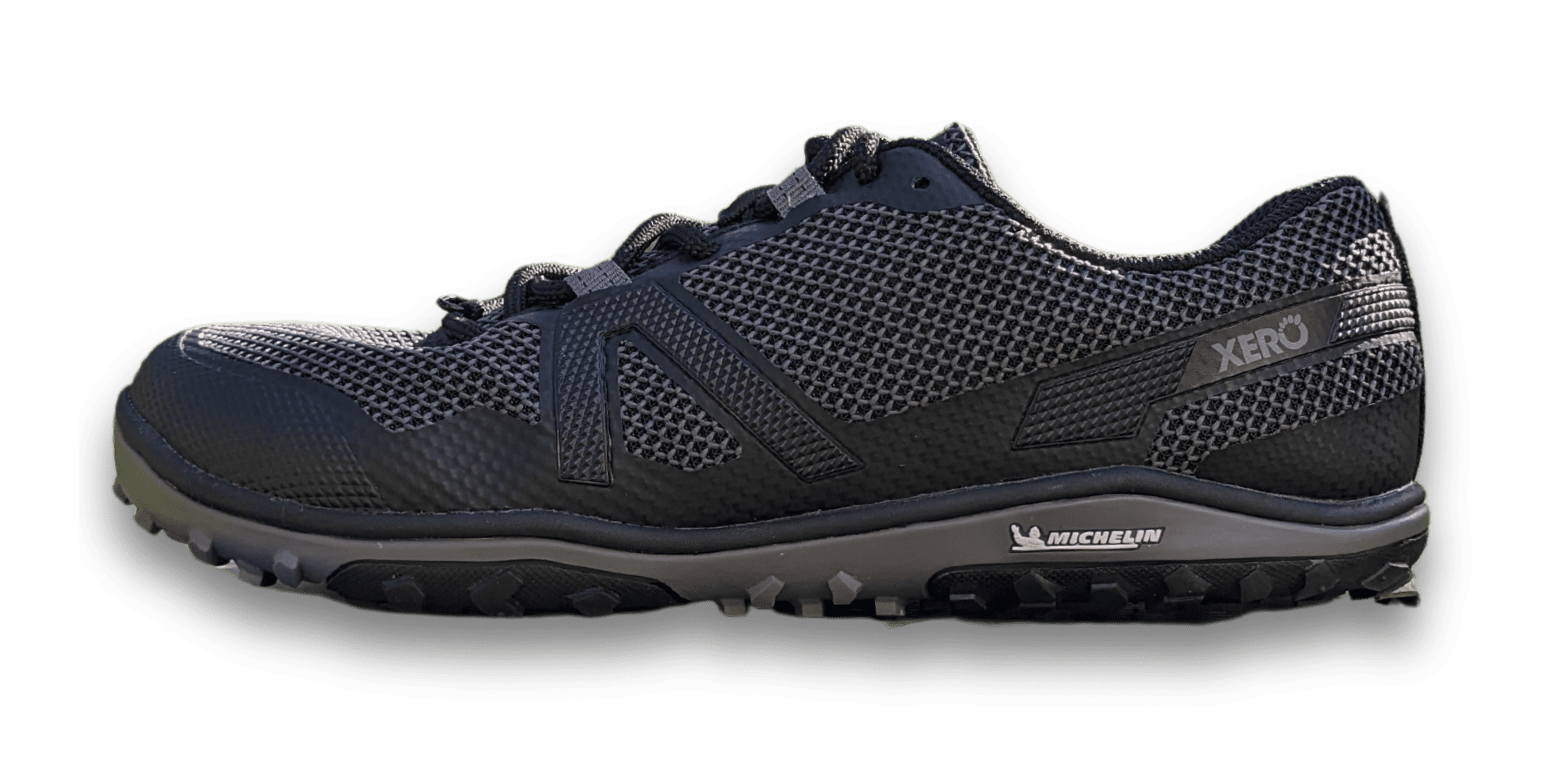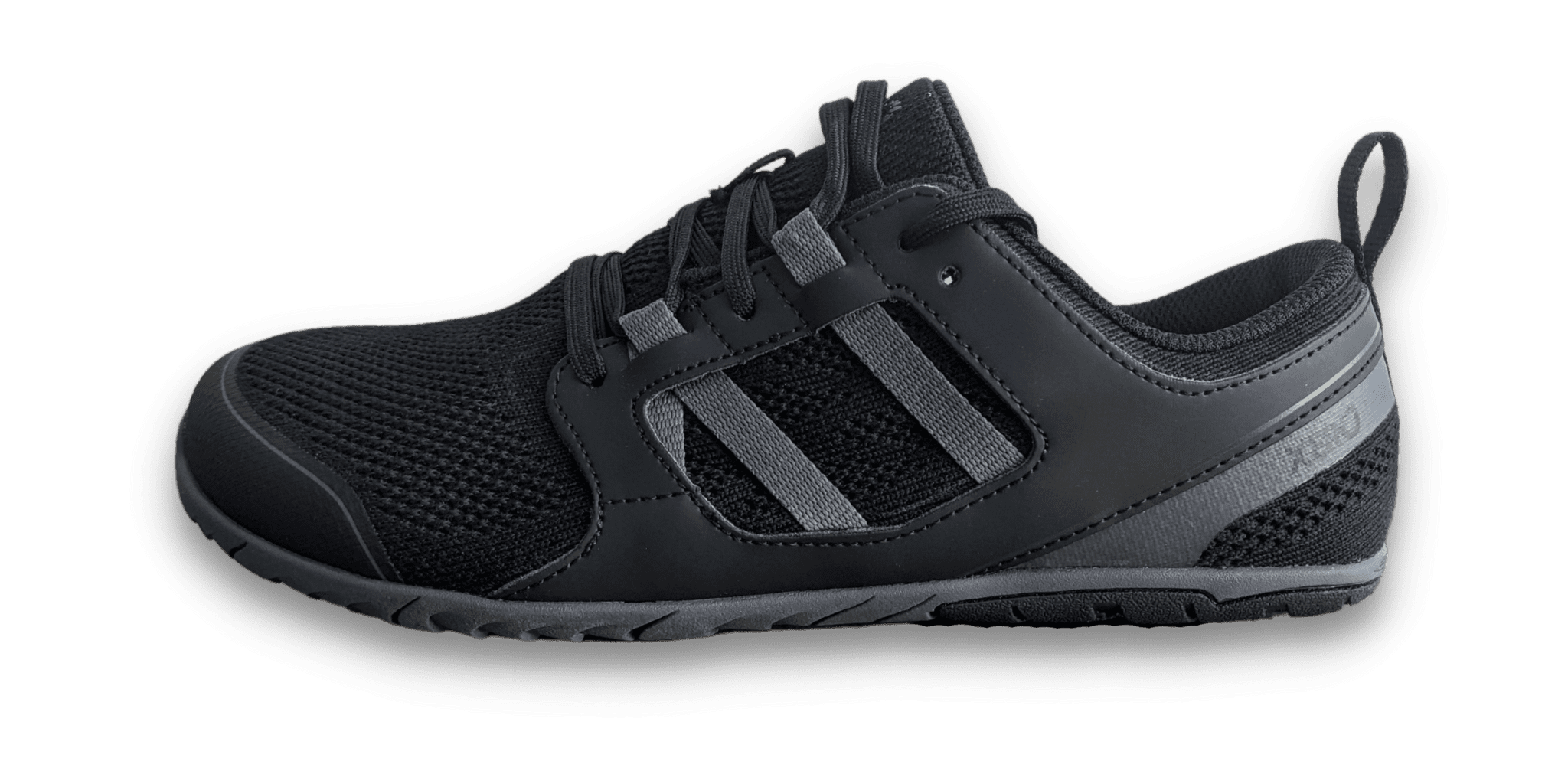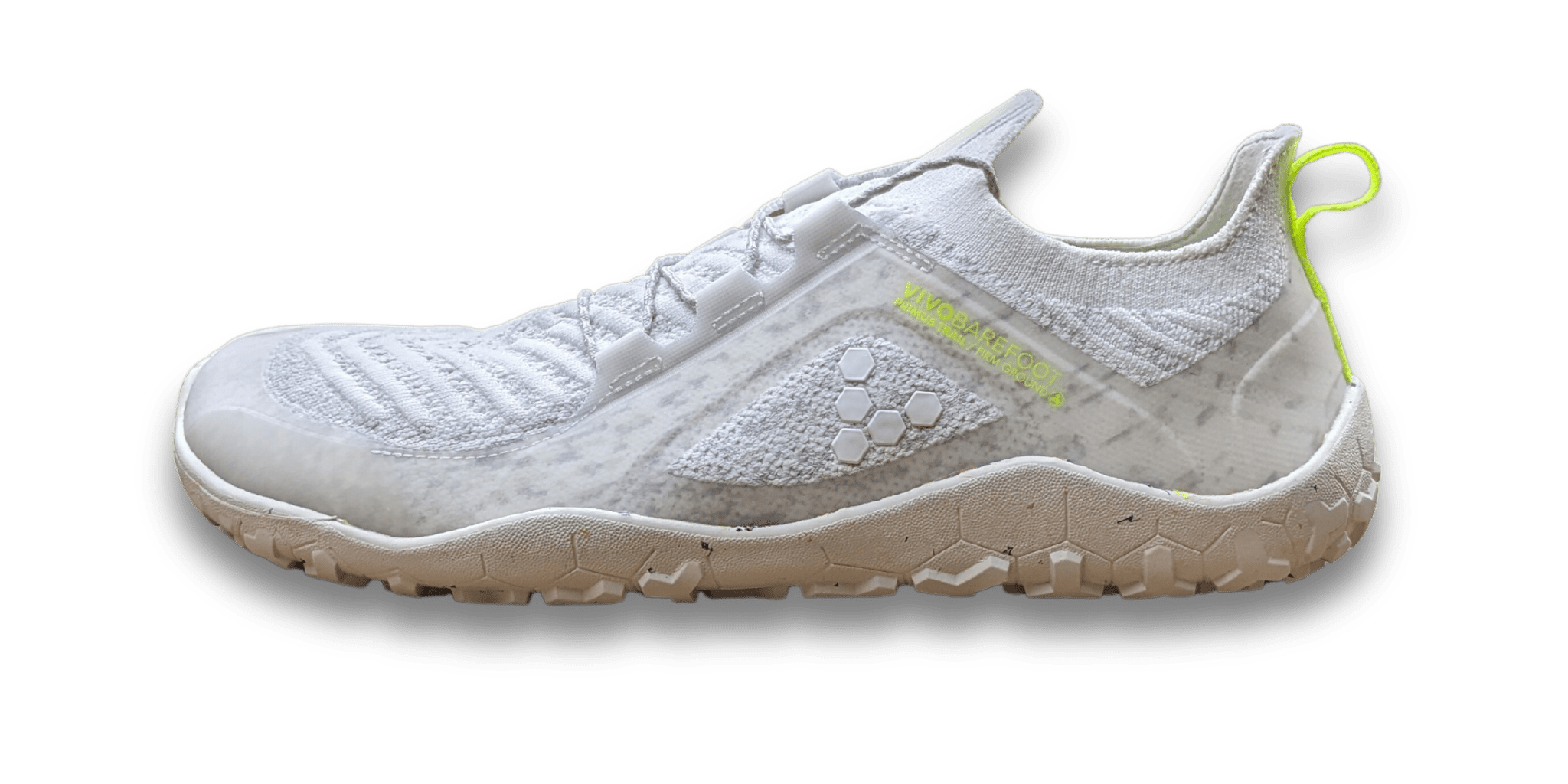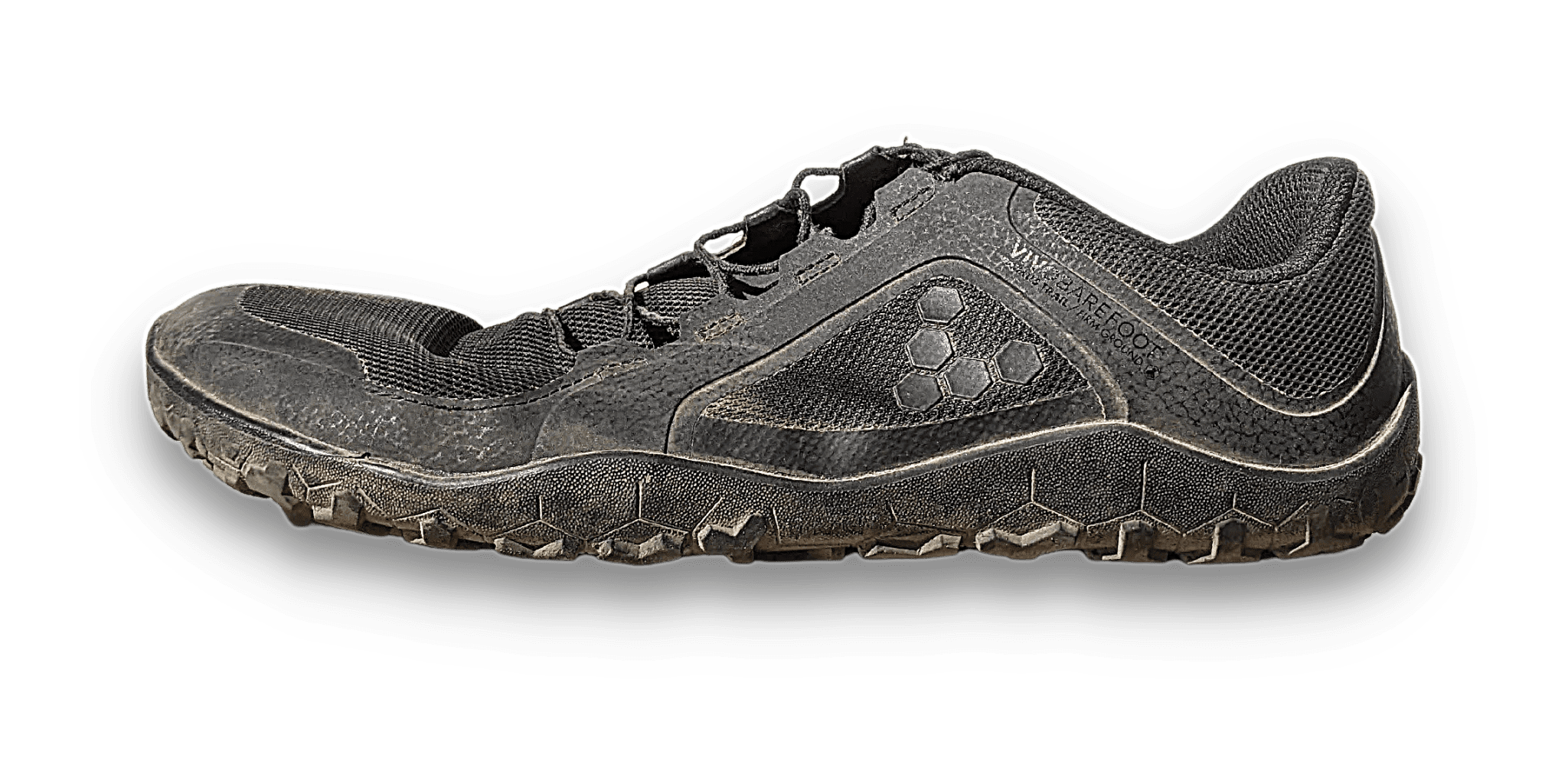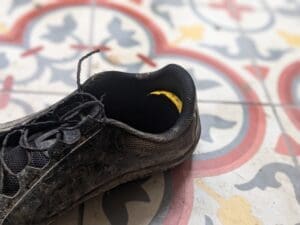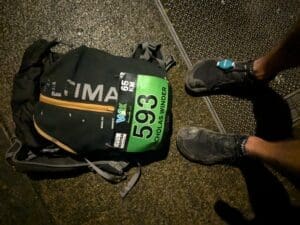Buying shoes. You either love it or hate it. I get it. I used to work in a running shoe store and had unlimited choices, but I still needed help choosing a suitable model. The main deciding factor comes down to fit and how a shoe should fit on your foot.
- Should your toe be as close to the end as possible?
- Should your foot be hanging over the end of the sole?
- What does it mean when your heel slips out of the shoe?
I will answer all these questions for you, so next time, when you put a pair of shoes on, you know if the fit is correct and if the shoe works for you.
This is the question I hear time after time. And while it’s not the only measurement we should be worried about, it is a good indication of fit.
To cut to the chase, ½ a thumb width to a full thumb width from your longest toe to the end of the shoe is an excellent general rule.
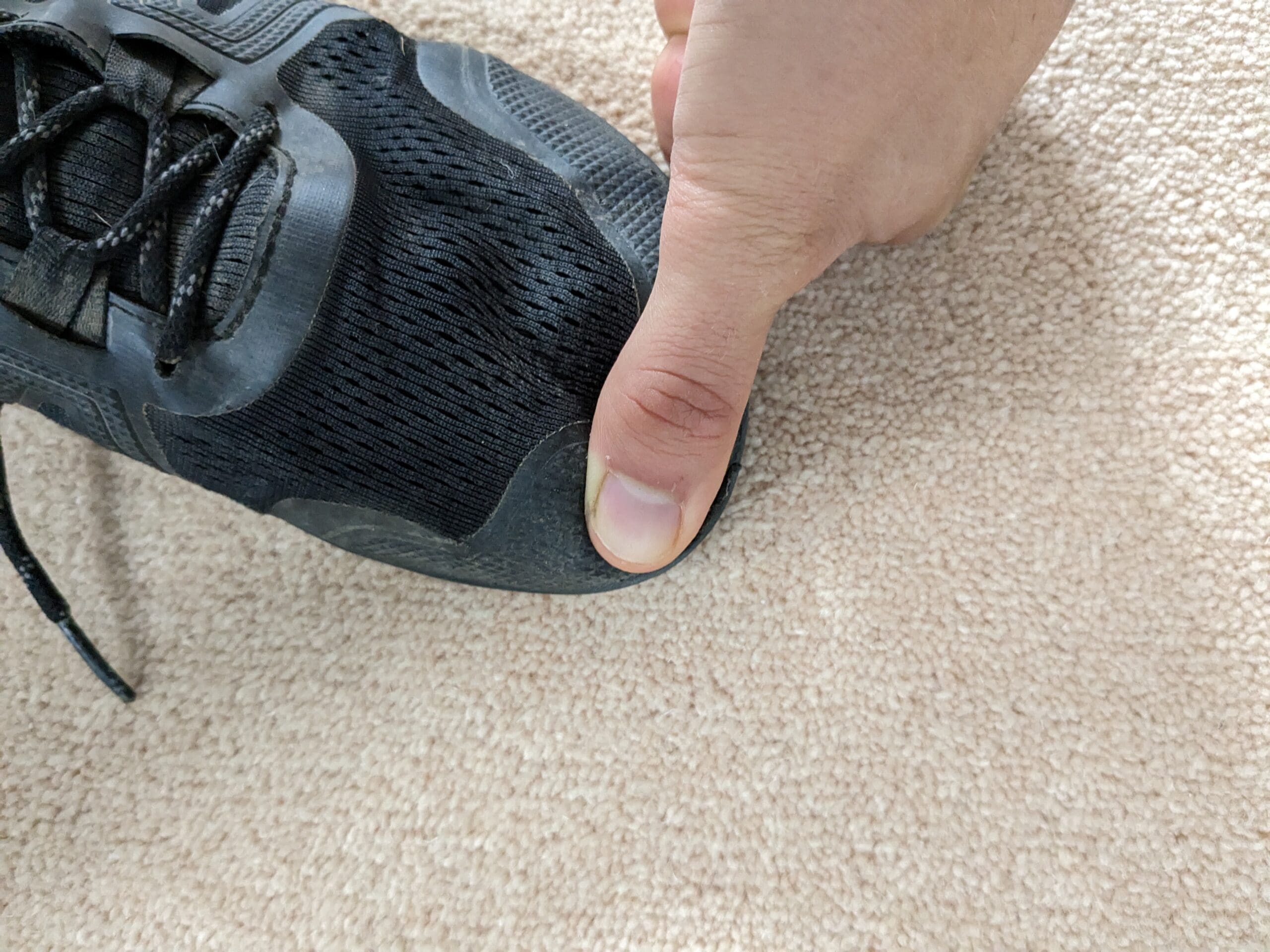
Now comes the part where I would answer this question honestly with, “it depends”!
Many aspects can change how a shoe fits, and the shape of the toe box is one of those. Generally, in the barefoot world, we like to see nicely squared toe boxes with ample room for the big toe and little toes, but sometimes that’s not always the case.
Another area that may change the requirements of the toe box is your foot! If you have a wide splay, meaning your toes spread wide, you will often have to buy longer shoes to accommodate such a splay unless the shoe is already drastically wide in the toe box.
Which minimal running shoe is for you?
Take a quick 5-question quiz to identify the perfect minimal running shoe for your feet! You'll get both road and trail options based on your answers!
Always ensure you measure the length of the shoe while standing
When you put weight through your foot, i.e. standing, your foot will lengthen and widen slightly under the load. When running, this is exacerbated even more.
This is why it’s essential to leave room at the end of the shoe to allow the foot to expand and shift inside the shoe without your toe slamming into the font.
Trail shoes will require more room at the end
When descending very technical terrain, you’ll sometimes land heavy with lots of horizontal force. These forces will push your foot toward the front of the shoe.
No matter how well you tighten your laces, your foot will move forward, so it’s imperative to leave room for your foot to move without your toe slamming into the front of the shoe.
Different brands and models fit differently across the width of the foot.
It’s not just the toe box we’re talking about here; it’s the forefoot, midfoot, and heel.
Personally, I often have issues in the midfoot because this is the widest part of my foot; for others, that may be the forefoot or toe splay.
When assessing the width of a shoe, you should find a shoe that feels secure but not overly tight in all areas of the foot. It’s often best you air on the wider side, as your foot will expand with load and heat.
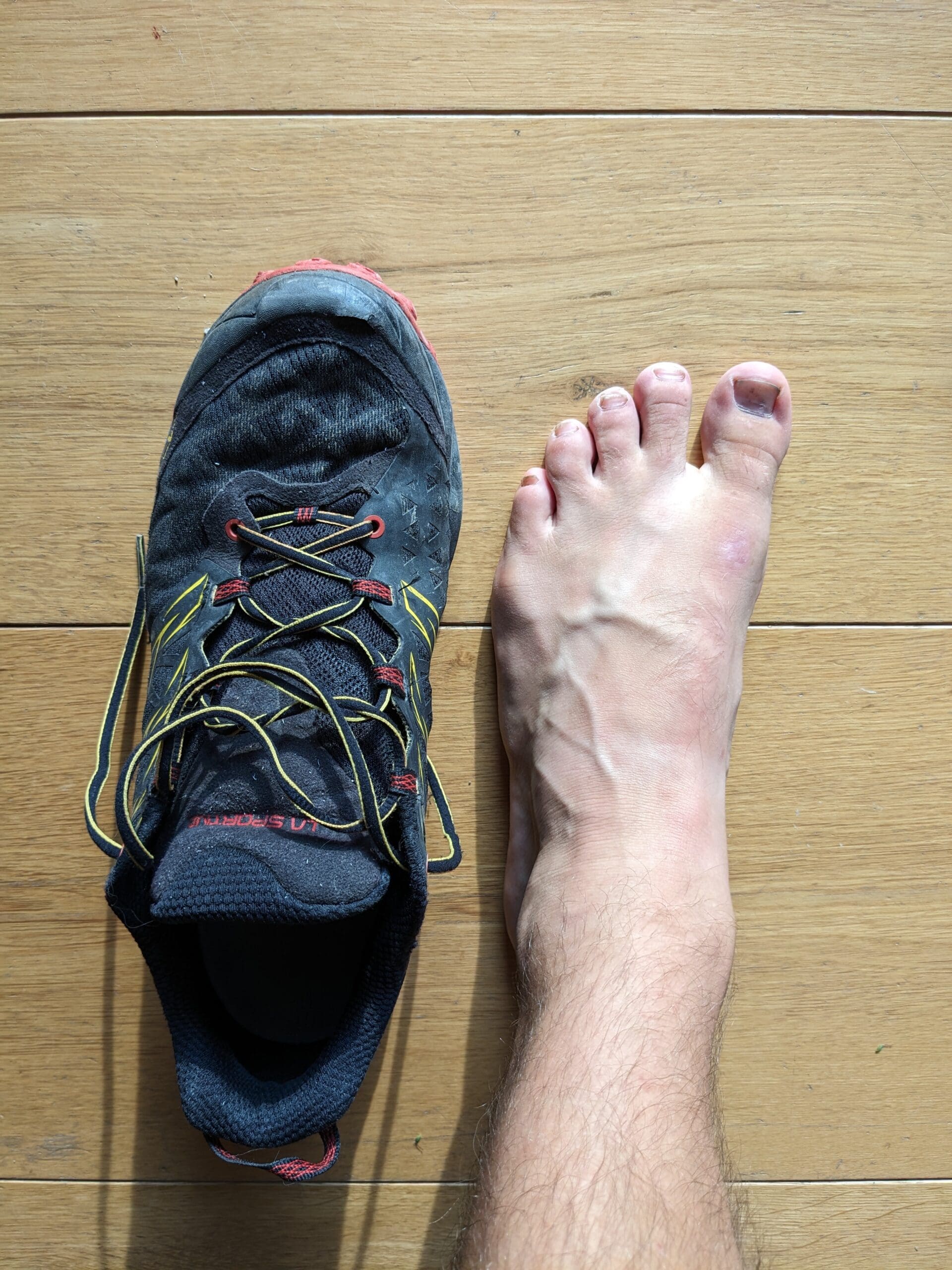
The only exception to feeling “secure” is in the toe box
You want a gentle, secure feeling around the foot.
The one exception to this is in the toe box. You want your toes to be as free as possible!
That means you want your toes to be able to splay when you load your foot. Have a little room above the toes for some flex, and generally have the ability to wiggle with freedom.
A basic measurement doesn’t tell the whole story
Measuring the length and width of your feet is helpful, but it’s not the end all be all. Shoe materials can also make a difference regarding a comfortable width.
Harder, more durable overlays can stiffen the side walls of the shoe, and if the shoe is a little too narrow, it’ll be uncomfortable or even painful.
On the other hand, a softer material can allow you to get away with narrower shoes as they will expand to the shape of your foot. This is not ideal, but it is acceptable if every other aspect of the shoe works for you. (I often find this in the midfoot with Altra shoes).
Any heel movement will cause a blister or wear a hole in the inner material liner. And you don’t want either of these to happen. However, this is less important in a causal shoe.
You’re unlikely to get an excellent heel lock out of the box, so you’ll have to work with the fit and lacing to improve the heel lock over time.

My heel slips; what should I do?
You might need to add a lace lock
If the shoe has a second, unused eyelet on the ankle collar of the shoe, I nearly always tie a lace lock.
A lace lock secures the ankle collar around the ankle, pulls the heel in, and nearly always stops any heel slippage I have.
There may be too much slack over the top of your foot
If the lacing is slack over the top of your foot, your foot will tend to slip forward, ending with your heel being loose and slipping out the shoe.
Give the laces a slight tug on each crossover to tighten your foot into place, but don’t over-tighten, which can cause issues elsewhere.
If the upper material is super flexible, you can get away with pulling the laces tight, whereas stiffer materials require a gentler lacing approach. Just take your time to find a balance.
Everyone talks about the length of a shoe, and in the barefoot world, we talk about width a lot. But one dimension many need to remember is depth.
Depth is the height of your foot over the toes, forefoot, and midfoot and can make a drastic difference when securing a shoe on the foot.
Too deep, and you’ll never be able to tie the laces tight enough to secure the shoe.
Too shallow, and you’ll have lots of pressure over the top of the foot that may become uncomfortable.
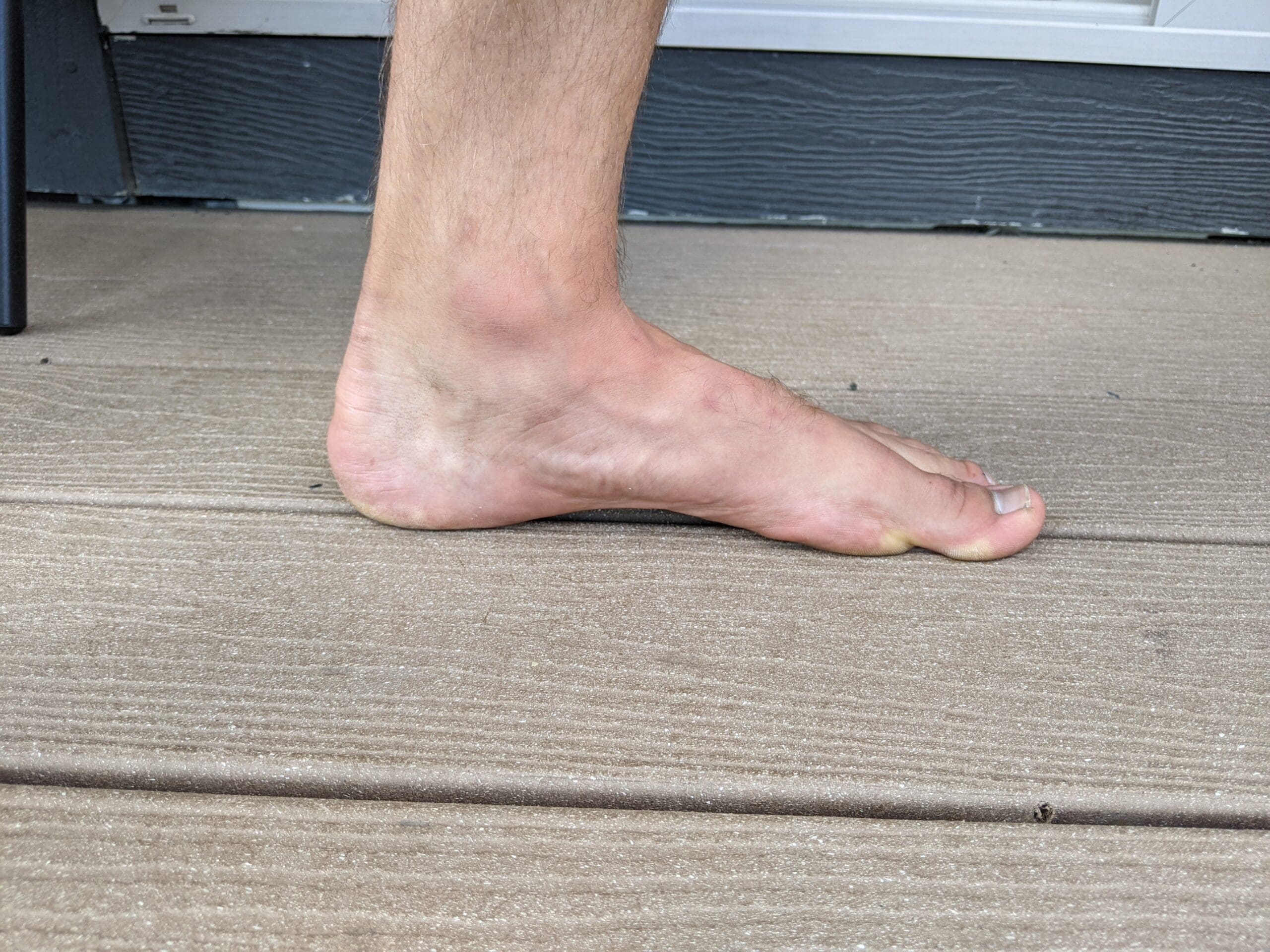
How do I know if I have a shallow or deep foot?
It’s hard to measure depth, but a good indication of a shallow foot is if you notice that you have bunchings of material over the top of many of your shoes. That’s usually because you have to tighten your shoe to a point where there’s excess material.
On the other hand, if you have to loosen your laces drastically to get your foot in a shoe, you likely have a deep foot.
Some shoes fit deeper than others, so it’s worth paying attention to this dimension when choosing a brand and model.
A little trick if you need more depth in a shoe is to take the insole out! Often, brands design shoes that can be run without the insoles, so you can gain an extra few mm by removing the insole or at least replacing the insole with something a little thinner.
I see this over and over again on Facebook groups and social media.
Measuring the insole is not a good way of measuring the dimensions of a shoe. So don’t do it!
Why?
The same insole is often used across different models and even different sizes of shoes! This means that US9 and US9.5 have the same insole! But they’re different sizes, aren’t they? YES! So, you can’t rely on the measurements of an insole.
Logically, this makes sense because the insole is primarily a 1-dimensional measurement of a shoe and may even curl up the sides of the shoe, making any comparison measurements null and void.
Measurements get you halfway there, but it’s only when you get the shoe on the foot that you know if it works.
My last advice is not to get hung up on the measurements.
The feeling of a shoe goes far beyond the measurements of the internals.
It’s the material choice, the sole feel, the heel cup, the depth, and the lacing design. IT’S EVERYTHING!
So go ahead and use measurements to estimate what model and size to order, but in the end, you’ll only know if it’s right for you once you put them on your feet.
Don’t get too hung up on the small details
Ok … one more piece of advice. 🙂
It’s usually obvious when a shoe doesn’t fit well. It just feels all wrong.
But at the same time, many of us (including me) overthink the shoe fit. And this can often lead me to question whether the shoe fits.
Everyone’s feet are different, whether a bulge in the heel or an amazingly wide fan-shaped foot.
Finding that “perfect” Cinderella shoe that fits “just right” is nearly impossible. You often have to make compromises in some areas.
As long as that compromise doesn’t cause pain or long-term detrimental effects to your feet/body. The shoe will work “fine”.
I have to keep on telling myself that, too.
And until we see the future of perfect 3D-printed shoes, we’ll have to make do with “fine”.
